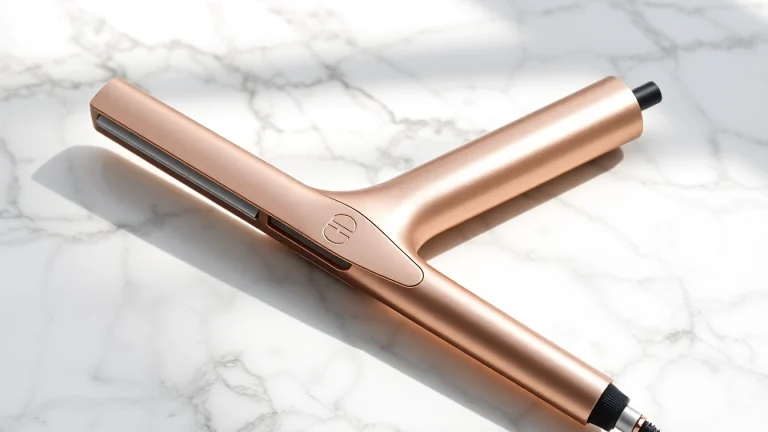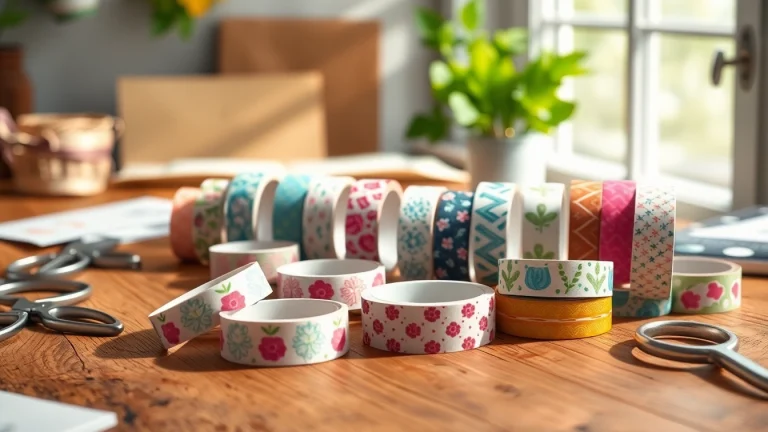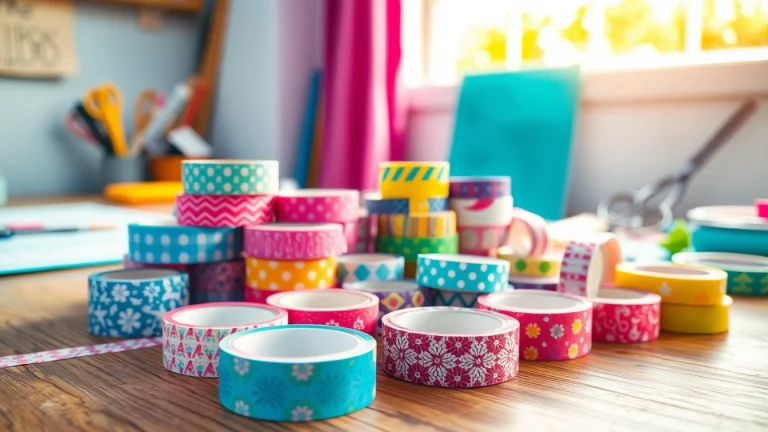
Enhance Your Hair Game: Top Heat Tools for Hair Styling Revealed
Understanding Heat Tools for Hair
In the ever-evolving world of hair care and styling, heat tools for hair have become essential accessories for achieving various hairstyles. These tools harness controlled heat to manipulate the hair’s texture and appearance, offering a versatile range of styling options from sleek and straight to voluminous and curly. Understanding these tools is crucial for anyone looking to master hair styling techniques and maintain healthy hair.
What Are Heat Tools for Hair?
Heat tools for hair refer to appliances that use heat to change the shape and style of hair. These tools generally include hair straighteners, curling irons, hair dryers, and hot air brushes. Each of these tools functions differently, but they all achieve one common goal: to help you style your hair efficiently.
Types of Heat Tools and Their Functions
There are various types of heat tools available on the market, each designed with specific functionalities:
- Hair Straighteners: Designed to smoothen hair strands, straighteners are ideal for those looking to achieve a sleek, polished look. They vary in plate materials from ceramic to tourmaline, providing different heat distribution and protection for the hair.
- Curling Irons: Curling irons come in various barrel sizes, enabling users to create different types of curls, from loose beach waves to tight ringlets. They are often equipped with features like adjustable temperature settings to cater to different hair types.
- Hair Dryers: Essential for quick drying and styling, modern hair dryers often come with multiple heat and speed settings, as well as attachments like diffusers and concentrators for better styling control.
- Hot Air Brushes: Combining the function of a hairdryer and a styling tool, hot air brushes allow users to dry and style their hair simultaneously, providing volume and smoothness.
Safety Measures When Using Heat Tools
Using heat tools requires a level of caution to avoid damaging hair or causing accidents. Here are some essential safety measures:
- Always read the manufacturer’s instructions before using any heat tool.
- Adjust the temperature settings according to your hair type; fine hair requires lower temperatures while coarse hair can handle higher heat.
- Use a heat protectant spray to minimize damage caused by direct heat.
- Allow tools to cool down completely before storing them to prevent fire hazards.
- Never leave heat tools unattended while in use.
Choosing the Right Heat Tool for Your Hair Type
Choosing the correct heat tool is vital for achieving the best results and maintaining healthy hair. Not every tool works well with every hair type, making it essential to consider individual needs and preferences.
Identifying Your Hair Type
To choose the right heat tools, you must first identify your hair type, which can be categorized based on texture, thickness, and condition. Each category may require a different approach:
- Straight Hair: Generally, straight hair can handle the heat from most styling tools. Straightening irons or curling tools can effectively be used based on styling needs.
- Wavy Hair: Wavy hair may benefit from tools that enhance and define waves, such as curling wands or sea salt sprays, when used in conjunction with heat tools.
- Curly Hair: Curly hair often requires lower heat settings to prevent frizz and damage. Specialized tools like curling irons designed for coarse textures can help maintain the natural curl pattern.
- Fine or Damaged Hair: For fine or damaged hair, it is essential to choose tools that have adjustable heat settings and ideally, ceramic or tourmaline plates to distribute heat evenly and minimize damage.
Matching Tools to Hair Needs
Once your hair type is identified, the next step is matching the appropriate tools to meet your styling needs:
- Hair Straighteners: Seek straighteners with tourmaline or ceramic plates for an even heat distribution that increases shine and reduces damage.
- Curling Irons and Wands: Choosing a curling barrel size according to the desired curl type is crucial; larger barrels create looser curls while smaller barrels yield tighter curls.
- Hair Dryers: Opt for a dryer with ionic technology to combat frizz and enhance moisture retention.
- Hot Air Brushes: These are excellent for adding volume and shine, best suited for medium to long hair for creating graceful styles effortlessly.
Common Myths and Misconceptions
Several myths surround heat tools that can lead to misinformation among users:
- Myth 1: Higher heat equals better styling. In reality, the correct temperature for your hair type is far more important than merely using high heat.
- Myth 2: All heat tools cause damage. While improper use can lead to damage, high-quality tools designed for specific hair types can actually help maintain hair health.
- Myth 3: Heat protectants are unnecessary. This is false; using a heat protectant is essential for mitigated damage caused by styling tools.
How to Use Heat Tools Effectively
Once you have chosen the right heat tools, understanding how to use them effectively is crucial for achieving your desired hairstyles without compromising hair health.
Step-by-Step Guide to Styling
Here is a general step-by-step guide to using heat tools for styling:
- Preparation: Start with clean, dry hair for best results. Apply a heat protectant throughout your hair.
- Sectioning: Divide your hair into manageable sections to ensure even styling. Typically, working with smaller sections leads to better results.
- Styling: Depending on the tool, either clamp and glide through for straightening or wrap the hair around the barrel for curling.
- Cool Down: Allow styled hair to cool completely before touching or brushing it out to ensure curls or waves hold better.
- Finishing Touches: Apply a light hairspray or serum to lock in the style and add shine.
Heat Settings and Their Importance
Understanding heat settings is vital, as each hair type requires different levels of heat:
- Fine Hair: Use the lowest heat setting (usually between 250°F – 300°F).
- Medium Hair: Moderate heat settings (300°F – 350°F) can be effective.
- Thick or Coarse Hair: Higher heat settings (350°F – 450°F) may be necessary for effective styling.
Techniques for Different Hair Styles
Different hair styles call for varying techniques:
- Straightening: For straight hair, start from the roots and pull down in a slow, even motion. Ensure each section is flat against the plates for the best results.
- Curling: For loose waves, use a large barrel curling iron, wrap larger sections around the barrel, and hold for less than 10 seconds.
- Adding Volume: Use a hot air brush to lift hair at the roots, rolling the brush as you move down the strands to encourage volume.
Maintaining Your Heat Tools for Longevity
Proper maintenance of your heat tools is critical for their longevity and optimal performance, ensuring that they consistently provide the desired results.
Cleaning and Caring for Your Tools
Regular cleaning prevents the buildup of hair product residue and keeps your tools functioning efficiently:
- Unplug and allow the tool to cool down completely before cleaning.
- Use a damp cloth to wipe down the exterior and removable plates, but ensure no water enters the interior of the device.
- For stubborn residue, use a small amount of rubbing alcohol on a cloth for a thorough cleaning.
Storage Tips for Optimal Performance
Storing heat tools correctly helps prolong their lifespan:
- Store in a cool, dry place to avoid damage from humidity and heat.
- Use a protective pouch or case to prevent scratches or damage when not in use.
- Avoid wrapping cords tightly; instead, loosely coil them to prevent fraying.
When to Replace Your Heat Tools
Knowing when to replace your heat tools is important for maintaining styling quality:
- If you notice uneven heat distribution or if the tool frequently burns your hair, it may be time to invest in a new tool.
- Physical damage, such as broken plates or frayed cords, is a clear sign for replacement.
- A decrease in performance, such as longer styling times or inadequate heat, suggests that the tool is becoming less effective.
Evaluating the Performance of Heat Tools for Hair
Understanding how to evaluate the performance of your heat tools helps you make informed decisions about hair styling products and techniques that work best for you.
Measuring Effectiveness and User Experience
Performance can be measured by the effectiveness of styling and the overall user experience. Key factors include:
- How quickly the tool heats up and cools down.
- The evenness of heat distribution across styling surfaces.
- Comfort and ease of use, including weight, grip, and cord length.
Real User Testimonials
User testimonials serve as valuable insights into the practicality and effectiveness of heat tools. Reviews often highlight specific benefits such as:
- Consistency in results regardless of hair type.
- Durability and long-term performance.
- User-friendly features like automatic shut-off and digital displays.
Comparative Analysis of Popular Brands
Conducting a comparative analysis of popular brands in the heat tool market can help users make informed choices. Notable brands such as BaByliss, GHD, and Dyson each have their own unique offerings. Factors to consider include:
- Price point versus features offered.
- Material quality and technology (e.g., infrared heat).
- Warranty and customer support options.


